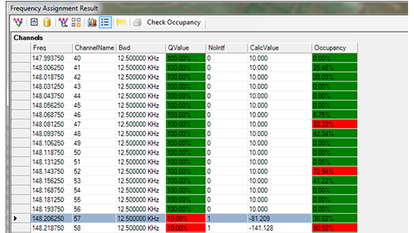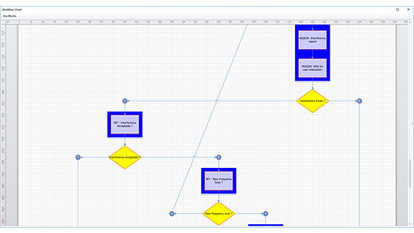Smart Spectrum Engineering & Technical Frequency Analysis
SPECTRAemc is an advanced spectrum engineering and frequency analysis solution designed to ensure efficient use of the valuable radio spectrum. With a comprehensive library of wave propagation models, it supports key spectrum tasks including coverage prediction, interference assessment, channel assignment, and both national and international coordination.
SPECTRAemc is a proven solution, used by spectrum authorities and organizations in numerous countries. Its performance, accuracy, and ease of use are relied upon by users in spectrum regulation, defense, airport coordination, and wireless industries.
The unique wizard workflow engine of SPECTRAemc guides the users smoothly through each engineering or analysis task. Experts can predefine the most complex parameters, ensuring accuracy while making the tool intuitive for both junior and senior staff.
Technical Features of SPECTRAemc
Explore core functions designed to power precise engineering and automated workflows.

Comprehensive Propagation Model Library
Fully ITU-compliant and up-to date models from VLF to EHF to support all radio services including fixed, land mobile, aeronautical, etc.

Coverage & Performance Prediction
Accurate coverage predictions for single stations and complete networks considering topography, land usage and other environmental impacts.

Interference & Frequency Analysis
Intra-/inter-service interference checks, channel evaluation, and automatic frequency assignment.

Real-World Monitoring Integration
Integrate LS OBSERVER data to support frequency assignments, verify simulation results and detect anomalies.

Safety Zone & EMF Calculation
Assess EMF exposure zones in compliance with national and international thresholds.

Wizard-Based Automation
Simplify complex tasks with expert-defined workflows using a unique wizard engine.

Spectrum Management Integration
Provide accurate frequency assignments for applications from mySPECTRA or mySPECTRA for Defense avoiding harmful interference cases.

Scalable Multi-User Architecture
Use SPECTRAemc either offline and standalone or in a multi-user environment with a central database (Oracle, PostgreSQL).

International Notification & Exchange
Automate bilateral/ITU coordination, BRIFIC integration, and notification management.
Key Applications Across Industries
Use SPECTRAemc in a wide range of regulatory and operational environments.

Spectrum Regulation
Automate and accelerate spectrum coordination and assignment.
SPECTRAemc supports regulators with tools for coverage prediction, interference analysis, and channel assignment using ITU-compliant models.
Automate complex tasks with the wizard engine, and streamline coordination with neighboring countries or international bodies like the ITU.

Defense & Security
Enable automated spectrum analysis for mission-critical operations.
In tactical operations, SPECTRAemc delivers automated frequency analysis, interference checks, and scenario-based planning.
With its wizard engine and support for NATO SMADEF, the system assures interoperability with allied forces and facilitates the provision of reliable communication networks in congested and contested environments.

Airports
Protect wireless communication across smart airport environments.
SPECTRAemc ensures safe frequency usage for radar, links, and airport systems.
It supports coverage prediction, interference mitigation, and coordination using ICAO COM2–COM5 standards.